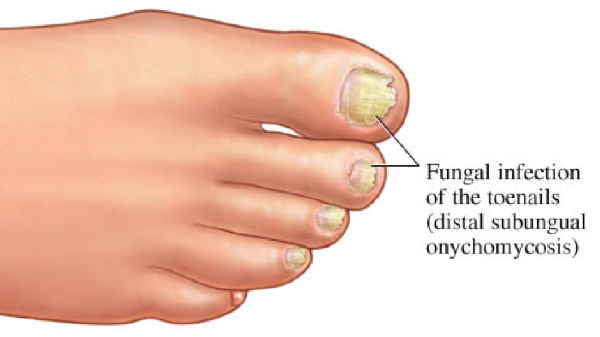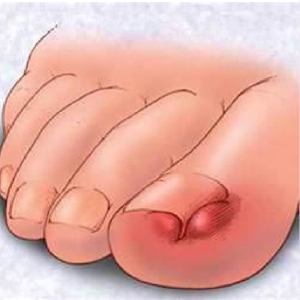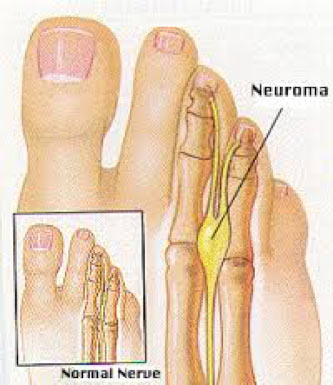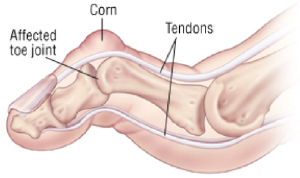Description
Orthosis (Orthotics) is an in-shoe brace which is designed to correct for abnormal foot and lower extremity function [the lower extremity includes the foot, ankle, leg, knee, thigh and hip]. In correcting abnormal foot and lower extremity function, the prescription foot orthosis reduces the strain on injured structures in the foot and lower extremity, allowing them to heal and become non-painful. In addition, prescription foot orthoses help prevent future problems from occurring in the foot and lower extremity by reducing abnormal or pathological forces acting on the foot and lower extremity. A prescription foot orthosis is more commonly known by the public as a "foot orthotic".
Two main types of foot orthoses. Accommodative orthoses and functional foot orthoses. Both types of prescription foot orthoses are used to correct the foot plant of the patient so that the pain in their foot or lower extremity will improve so that normal activities can be resumed without pain. However, accommodative and functional foot orthoses are generally made using different materials and may not look or feel the same. Both types of prescription foot orthoses are nearly always prescribed as a pair to allow more normal function of both feet [similar to having both the left and right wheels of a car realigned in a front end alignment].
Accommodative Foot Orthoses
Accommodative foot orthoses are used to cushion, pad or relieve pressure from a painful or injured area on the bottom of the foot. They may also be designed to try to control abnormal function of the foot. Accommodative orthoses may be made of a wide range of materials such as cork, leather, plastic foams, and rubber materials. They are generally more flexible and soft than functional foot orthoses. Accommodative orthoses are fabricated from a three dimensional model of the foot which may be made by taking a plaster mold of the foot, stepping into a box of compressible foam, or scanning the foot with a mechanical or optical scanner.
Accommodative orthoses are useful in the treatment of painful callouses on the bottom of the foot, diabetic foot ulcerations, sore bones on the bottom of the foot and other types of foot pathology. The advantages of accommodative orthoses are that they are relatively soft and forgiving and are generally easy to adjust in shape after they are dispensed to the patient to improve comfort. The disadvantages of accommodative orthoses are that they are relatively bulky, have relatively poor durability, and often need frequent adjustments to allow them to continue working properly.
Functional Foot Orthoses

Functional foot orthoses are used to correct abnormal foot function and, in so doing, also correct for abnormal lower extremity function. Some types of functional foot orthoses may also be designed to accommodate painful areas on the bottoms of the foot, just like accommodative foot orthoses. Functional foot orthoses may be made of flexible, semi-rigid or rigid plastic or graphite materials. They are relatively thin and easily fit into most types of shoes. They are fabricated from a three dimensional model of the foot which may be made by taking a plaster mold of the foot, stepping into a box of compressible foam, or scanning the foot with a mechanical or optical scanner.
Functional foot orthoses are useful in the treatment of a very wide range of painful conditions of the foot and lower extremities. Big toe joint and lesser toe joint pain, arch and instep pain, ankle pain and heel pain are commonly treated with functional foot orthoses. Since abnormal foot function causes abnormal leg, knee and hip function, then functional foot orthoses are commonly also used to treat painful tendinitis and bursitis conditions in the ankle, knee and hip, in addition to shin splints in the legs. The advantages of functional foot orthoses are that they are relatively durable, infrequently require adjustments and more likely to fit into standard shoes. The disadvantages are that they are relatively difficult to adjust and relatively firm and less cushiony.
Foot and Lower Extremity Biomechanics
The study of the mechanical nature of the foot and lower extremity is called biomechanics. It is a specialized branch of science that uses the mechanical principles of physics to study the motions and forces on the human body. Podiatrists receive specialized, in-depth training during their four years of medical training on how the movements and forces in the foot affect the movements and forces in the rest of the lower extremity, and how the movements and forces in the lower extremity affect the movements and forces in the foot. No other medical specialty has this in-depth training, which is necessary to understand lower extremity pathology as it relates to the biomechanics of foot function. Therefore, the podiatrist is the most qualified medical specialist to diagnose and treat foot pathology.
Understanding the biomechanics of the foot and lower extremity is of critical importance when the mechanism of an injury must be determined to decide on a appropriate treatment plan for the patient. In addition, biomechanics plays an important part in the planning for corrective surgery for injuries, such as tendon ruptures or bone fractures, or for the surgical correction of deformities of the foot, such as hammertoes, bunions, or heel spurs. As a result of the podiatrist's training and expertise in biomechanics, they will often prescribe either functional or accommodative orthoses as part of their treatment plan. In many instances, an orthosis will be all that is required for the successful treatment of foot or lower extremity pathology. In most instances, however, an orthosis will be prescribed along with other therapies, such as stretching or strengthening exercises, oral or injectable medications, and specific types of shoes, in order to insure the fastest healing for the patient.
The Process of Prescribing Foot Orthoses
In order to design and fabricate a prescription foot orthosis, the podiatrist must perform a biomechanical examination of the foot and lower extremities. Angular measurements are taken of the toes, foot, ankle, knees and hip to determine the amount and level of any structural or functional deformities. This examination is done while the patient is on an examining table and also while standing. The podiatrist will also do a walking and/or running gait analysis of the patient to determine how their foot and lower extremity functions during these activities. Abnormalities from the biomechanical examination and gait examination are noted in the patient's chart for future consideration in the design and fabrication of the prescription foot orthosis.
The podiatrist then next must make a three dimensional model of the patient's feet in order to make a prescription foot orthosis. This is done by either applying plaster splints to the patient's foot, by having the patient step into a box of compressible foam, or having the foot scanned by a mechanical or optical scanner. The resultant three-dimensional model of the foot is then used along with a detailed orthosis prescription from the podiatrist to have the prescription foot orthoses made for the patient. Most podiatrists have a specialty podiatric orthosis laboratory make their orthoses while some podiatrists make their own prescription foot orthoses.
Advantages and Disadvantages of Prescription Foot Orthoses
The advantages of prescription foot orthoses are many. First of all, they are custom made for each foot of each patient, so that each foot orthosis will only fit one foot correctly. In addition, since they fit so exactly to the persons foot, they can be made with relatively rigid, durable materials with a minimal chance of discomfort or irritation to the patients foot. Prescription foot orthoses also have a much greater potential to effectively and permanently treat painful conditions, all the way from the toes to the lower back, since they are designed specifically for an individual's biomechanical nature.
For example, in children, prescription foot orthoses are used to prevent abnormal development of the foot due to flatfoot or intoeing or outtoeing disorders. In athletes, prescription foot orthoses are used to allow the athlete to continue training and competing without pain. And in most adult patients, prescription foot orthoses are used to allow more normal daily activities without pain or disability.
One disadvantage to prescription foot orthoses is that they are relatively expensive when compared to store bought over-the-counter foot inserts. Even though the over-the-counter inserts do help some people with mild symptoms, they do not have the potential to correct the wide range of symptoms that prescription foot orthoses can since they are made to fit a person with an "average" foot shape.
In this fashion, prescription foot orthoses may be considered to be analogous to prescription eyeglasses. Over-the-counter eyeglasses may work for some people since they are made to correct for the average eye. However, over-the-counter eyeglasses will almost never work as well as prescription eyeglasses. Prescription foot orthoses, since they are custom made to each foot of a patient, are almost always more corrective and comfortable than over-the-counter foot inserts, even though over-the-counter inserts do work for some people.


 Typical symptoms are a dull ache most of the time, but when the patient first gets out of the bed in the morning, or when getting up after sitting for a period of time during the day, the pain in the heel is impressive. It almost feels like the heel has been bruised, from falling on a rock barefoot, but it is worse. Since there are several causes for heel pain, we need to pin-point the exact location of the pain is in order to diagnose the basic underlying cause for the problem. Testing is simple and generally pain-free. It's important to find out WHERE it hurts, not just HOW MUCH it hurts. After excluding general medical conditions that might cause the condition, the exam is localized to the heel and surrounding structures. The important anatomical structures are the heel bone (calcaneus), the tissues that attach to the bottom of the heel (plantar fascia) and the nerves that pass from the leg into the bottom of the foot (posterior tibial nerve and its branches). The exam begins with an assessment of the blood vessels and nerves that end in the foot because blood and nerve supply affect treatment.
Typical symptoms are a dull ache most of the time, but when the patient first gets out of the bed in the morning, or when getting up after sitting for a period of time during the day, the pain in the heel is impressive. It almost feels like the heel has been bruised, from falling on a rock barefoot, but it is worse. Since there are several causes for heel pain, we need to pin-point the exact location of the pain is in order to diagnose the basic underlying cause for the problem. Testing is simple and generally pain-free. It's important to find out WHERE it hurts, not just HOW MUCH it hurts. After excluding general medical conditions that might cause the condition, the exam is localized to the heel and surrounding structures. The important anatomical structures are the heel bone (calcaneus), the tissues that attach to the bottom of the heel (plantar fascia) and the nerves that pass from the leg into the bottom of the foot (posterior tibial nerve and its branches). The exam begins with an assessment of the blood vessels and nerves that end in the foot because blood and nerve supply affect treatment.

